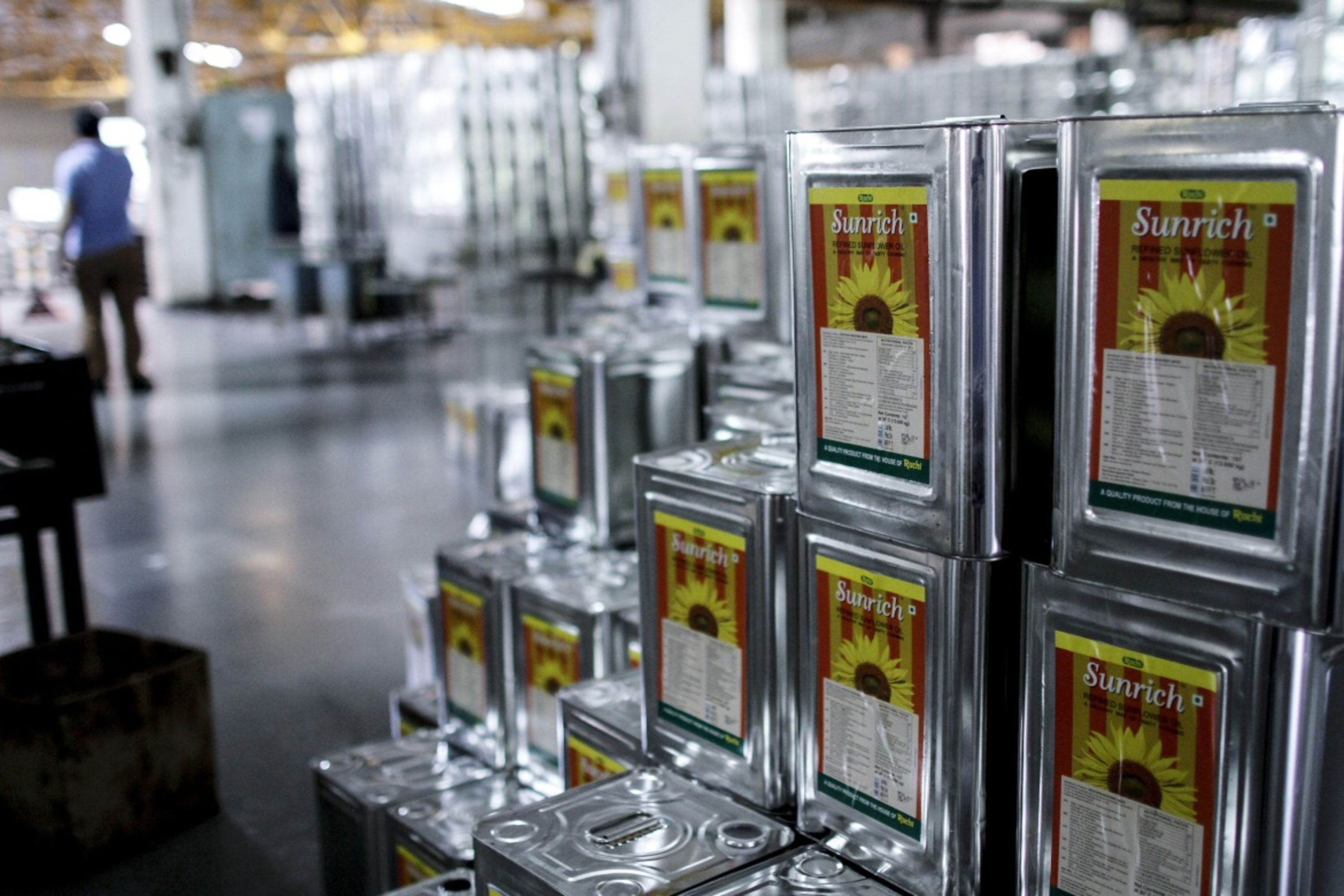
New Delhi, India – The ongoing Ukraine-Russia conflict has disrupted India’s edible oil market which gets more than 90 percent of its sunflower oil from those two countries, experts say. The resultant increase in retail prices could worsen if the war continues to rage on.
India consumes about 25 million tonnes of edible oil each year, of which it imports about 55 percent, making it the largest importer of edible oils in the world. In the financial year ending March 2021, it imported about 13.35 million tonnes of edible oils worth more than $10.5bn, according to government data (PDF). Of this, palm oil accounts for about 56 percent, soybean oil for 27 percent, and sunflower for about 16 percent.
In India, edible oil is used in a variety of products, including local snacks, cookies and shampoo, among other things. Over the past few years, the Indian government has been trying to increase the production of domestic edible oil but has not managed to keep up with the demand. That in turn has pushed up prices which have nearly doubled since 2017, as per government data. Now, with the war disrupting supply chains, consumers once again have to shell out more rupees for the same quantities of oil.
Situation ‘not alarming’
From November 2021 to February 2022, India imported 843,377 tonnes of sunflower oil, about 85 percent of which came from Ukraine, 14.3 percent from Russia and the rest from Argentina, according to the Solvent Extractors’ Association of India (SEAI), a vegetable oil industry body.
India typically imports 150,000-200,000 tonnes of sunflower oil each month, according to industry experts. And while the conflict has impeded fresh imports – February imports were down by at least 70,000 tonnes – officials say India can make up for the gap by substituting sunflower oil with other oils, including palm and soybean. However, as other countries, too, look to those products, their prices are already up nearly 20 percent in the international market.
“The supply has been disrupted due to war,” Sudhakar Desai, president of the Indian Vegetable Oil Producers’ Association (IVPA), told Al Jazeera, but the situation is “not alarming”. India has an inventory of at least 45 days and is “already working on backup plans” under which it is looking to buy 50,000-60,000 tonnes each of soybean oil and palm oil from South America and Southeast Asia in April, he said. That apart, the country has had a bumper crop of mustard which will be used to make mustard oil, another replacement for sunflower oil, he said.
The industry is also hopeful that a shipment of 160,000 tonnes of sunflower oil that left Ukraine before the outbreak of the war will reach Indian shores this month, BV Mehta, executive director of industry body SEAI, told Al Jazeera.
“The industry has assured the government that there will be no shortage of edible oil, and the supply chain will be maintained. There is no need to panic,” he said, adding that when the war ends, shipments of sunflower oil from the Ukraine region can resume within three to four weeks.
Challenges remain
Despite the assurances, challenges remain and the road to substituting the import of sunflower oil may not be a cakewalk. Together, Ukraine and Russia account for more than 75 percent of the world’s exports of sunflower oil. The majority of India’s palm oil imports are from Indonesia and Malaysia while the soybean oil comes from Argentina and Brazil. The ongoing crisis has already pushed up prices of those oils that the industry is hoping to use as substitutes for sunflower oil.
Protective measures to maintain supplies for their domestic markets by some of the exporting countries are further fuelling prices. For instance, Indonesia, the largest palm oil exporter, earlier this month directed domestic palm oil exporters to keep 30 percent of their stock for the local market, according to SEAI’s Mehta. Exporters are allowed to ship products only after they have physically deposited their required quotas and received written permissions for exports from government authorities, a long-drawn-out process.
This “in turn has led to a delay in shipment of palm oil from Indonesia”, Mehta told Al Jazeera.
Increasingly tight global vegetable oil supplies, coupled with rising soybean prices and events in Ukraine, have contributed to sharply higher prices for soybean and palm oil in February and March, according to a March report (PDF) by the United States Department of Agriculture. The average price of soybean oil per tonne from Argentina was $1,532 in February 2022 – an increase of $159 per tonne compared with January 2022. The average price of palm oil per tonne from Indonesia and Malaysia was $1,551 and $1,541 – an increase of $139 and $188 per tonne, respectively.
And if the war continues and the supply chain remains disrupted, Indian consumers will have to pay the price.
Just within the last few weeks of the Ukraine war, average retail prices of these oils have shot up, with prices of soybean, sunflower and palm oil increasing 8 percent, 12.5 percent and 14.4 percent to 158.68 rupees per kg, 168.13 rupees per kg and 148.91 rupees per kg, respectively.
On the effect of the crisis on the Indian consumers, Desai said, “Future price direction now much depends on how fast the Ukraine situation can get normalised.”
The one upside in all of this – high international commodity prices may help Indian farmers earn higher revenues, says Ajay Vir Jakhar, chairman of Bharat Krishak Samaj, a forum of farmers. The Narendra Modi government had promised in 2017 to double farmer incomes by 2022. While the government has not managed to deliver on that promise so far, the war might.







